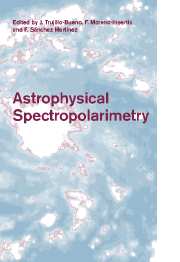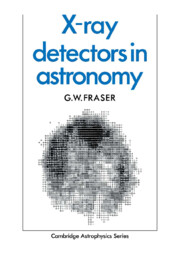Refine listing
Actions for selected content:
16950 results
Index
-
- Book:
- To Measure the Sky
- Published online:
- 05 June 2012
- Print publication:
- 27 May 2010, pp 441-446
-
- Chapter
- Export citation
5 - Optics for astronomy
-
- Book:
- To Measure the Sky
- Published online:
- 05 June 2012
- Print publication:
- 27 May 2010, pp 118-156
-
- Chapter
- Export citation

The Symbiotic Stars
-
- Published online:
- 26 May 2010
- Print publication:
- 18 December 1986

A Question and Answer Guide to Astronomy
-
- Published online:
- 24 May 2010
- Print publication:
- 11 March 2010

Astrophysical Spectropolarimetry
-
- Published online:
- 21 May 2010
- Print publication:
- 20 December 2001

X-ray Detectors in Astronomy
-
- Published online:
- 21 May 2010
- Print publication:
- 25 May 1989
10 - Stellar Populations and Chemical Evolution
-
- Book:
- Galaxy Formation and Evolution
- Published online:
- 05 June 2012
- Print publication:
- 20 May 2010, pp 449-494
-
- Chapter
- Export citation
4 - Cosmological Perturbations
-
- Book:
- Galaxy Formation and Evolution
- Published online:
- 05 June 2012
- Print publication:
- 20 May 2010, pp 162-214
-
- Chapter
- Export citation
14 - Active Galaxies
-
- Book:
- Galaxy Formation and Evolution
- Published online:
- 05 June 2012
- Print publication:
- 20 May 2010, pp 618-651
-
- Chapter
- Export citation
11 - Disk Galaxies
-
- Book:
- Galaxy Formation and Evolution
- Published online:
- 05 June 2012
- Print publication:
- 20 May 2010, pp 495-543
-
- Chapter
- Export citation
2 - Observational Facts
-
- Book:
- Galaxy Formation and Evolution
- Published online:
- 05 June 2012
- Print publication:
- 20 May 2010, pp 25-99
-
- Chapter
- Export citation
3 - Cosmological Background
-
- Book:
- Galaxy Formation and Evolution
- Published online:
- 05 June 2012
- Print publication:
- 20 May 2010, pp 100-161
-
- Chapter
- Export citation
A - Basics of General Relativity
-
- Book:
- Galaxy Formation and Evolution
- Published online:
- 05 June 2012
- Print publication:
- 20 May 2010, pp 741-747
-
- Chapter
- Export citation
16 - The Intergalactic Medium
-
- Book:
- Galaxy Formation and Evolution
- Published online:
- 05 June 2012
- Print publication:
- 20 May 2010, pp 689-740
-
- Chapter
- Export citation
Contents
-
- Book:
- Galaxy Formation and Evolution
- Published online:
- 05 June 2012
- Print publication:
- 20 May 2010, pp v-xvi
-
- Chapter
- Export citation
1 - Introduction
-
- Book:
- Galaxy Formation and Evolution
- Published online:
- 05 June 2012
- Print publication:
- 20 May 2010, pp 1-24
-
- Chapter
- Export citation
8 - Formation and Evolution of Gaseous Halos
-
- Book:
- Galaxy Formation and Evolution
- Published online:
- 05 June 2012
- Print publication:
- 20 May 2010, pp 366-416
-
- Chapter
- Export citation
E - Useful Numbers
-
- Book:
- Galaxy Formation and Evolution
- Published online:
- 05 June 2012
- Print publication:
- 20 May 2010, pp 776-776
-
- Chapter
- Export citation
References
-
- Book:
- Galaxy Formation and Evolution
- Published online:
- 05 June 2012
- Print publication:
- 20 May 2010, pp 777-805
-
- Chapter
- Export citation
13 - Elliptical Galaxies
-
- Book:
- Galaxy Formation and Evolution
- Published online:
- 05 June 2012
- Print publication:
- 20 May 2010, pp 574-617
-
- Chapter
- Export citation
